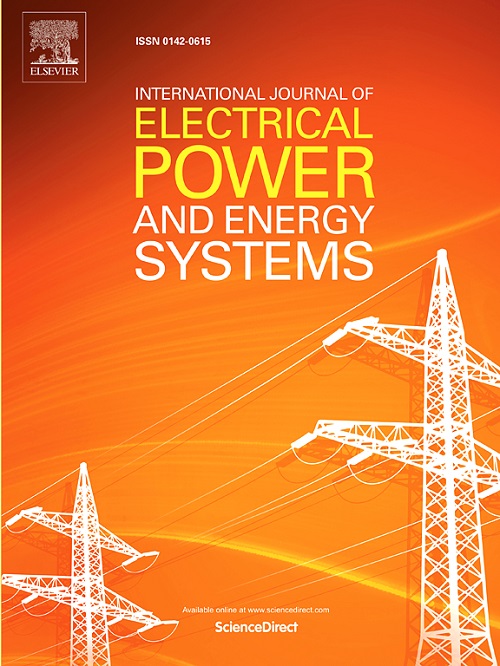一种数据驱动的电气化铁路接触网功耗估算算法
IF 5
2区 工程技术
Q1 ENGINEERING, ELECTRICAL & ELECTRONIC
International Journal of Electrical Power & Energy Systems
Pub Date : 2025-05-21
DOI:10.1016/j.ijepes.2025.110737
引用次数: 0
摘要
电气化铁路的用电量不仅反映了供电能力、供电效率和节能水平,也预示着潜在的缺陷和风险。然而,由于牵引网络的复杂性和列车的随机性,如何准确、经济地估计电力消耗是一个挑战。提出了一种数据驱动的电气化铁路接触网和列车电耗估算算法。基于牵引变电所和分段站同步实时电性数据,通过单列工况识别接触网单元阻抗。多列条件下的欠定问题可以转化为一个有限解域内的问题,取决于平均速度、速度限制或两者。考虑列车运行的时间依赖性和位移连续性,可以得到不同车次在同一供电段运行时的功率消耗。最后,通过现场试验以及牵引和供电计算的仿真数据验证了所提方法的有效性。以现场试验为参考,识别结果较常规方法准确,误差为- 0.75%。该算法不需要额外的监控设备和计算能力。本文章由计算机程序翻译,如有差异,请以英文原文为准。
A data-driven power consumption estimation algorithm of catenary for electrified railway
Power consumption for electrified railway not only reflects the power supply capacity, energy supply efficiency and energy saving level, but also indicates potential defects and risks. However, due to the complexity of the traction network and the randomness of trains, there is a challenge to estimate the power consumption accurately and economically. This paper proposes a data-driven power consumption estimation algorithm of catenary and trains for electrified railway. The unit impedance of catenary is identified via a one-train condition based on the simultaneous real-time electrical data of traction substation and section post. The underdetermined issue of multi-train condition can be converted into a problem within a finite solution domain, depending on either the average speed, speed limit, or both. Considering the time dependence and the displacement continuity of trains, the power consumption can be obtained for conditions with different number of trains operating in a power supply section. Finally, the proposed method is validated by field test and simulation data from traction and power supply calculations. Taking the field test as a reference, the identified result is accurate with an error of −0.75 % compared to the conventional method. No extra monitoring devices and computing power are required in the algorithm.
求助全文
通过发布文献求助,成功后即可免费获取论文全文。
去求助
来源期刊
CiteScore
12.10
自引率
17.30%
发文量
1022
审稿时长
51 days
期刊介绍:
The journal covers theoretical developments in electrical power and energy systems and their applications. The coverage embraces: generation and network planning; reliability; long and short term operation; expert systems; neural networks; object oriented systems; system control centres; database and information systems; stock and parameter estimation; system security and adequacy; network theory, modelling and computation; small and large system dynamics; dynamic model identification; on-line control including load and switching control; protection; distribution systems; energy economics; impact of non-conventional systems; and man-machine interfaces.
As well as original research papers, the journal publishes short contributions, book reviews and conference reports. All papers are peer-reviewed by at least two referees.

 求助内容:
求助内容: 应助结果提醒方式:
应助结果提醒方式:


